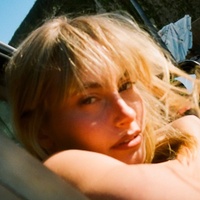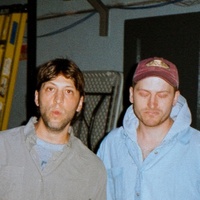On challenging the audience
Prelude
Jackson Wiederhoeft is an artist, storyteller, and designer. They studied fashion design at Parsons, winning “Women’s Designer of the Year” for their thesis collection in 2016. For the following three years, Jackson designed for Thom Browne, working on the women’s runway collections. Jackson launched Wiederhoeft’s debut collection, “Spooky Couture,” in October 2019. In 2022, Jackson was named a finalist of the Vogue / CFDA Fashion Fund and Wiederhoeft presented their first runway show. Over the following seasons, the brand has cemented its place in New York Fashion Week, crafting a variety of runway-show-meets-performance narrative presentations that inspire audiences. Their intricately crafted garments empower the wearer with a fantastical sense of self–worn by iconic musicians like Rihanna, Lady Gaga, and Sabrina Carpenter, to comedic stars like Chloe Fineman, Rachel Sennott, and Ziwe.
Conversation
On challenging the audience
Fashion designer Jackson Wiederhoeft discusses slowing the pace, getting abstract, and encouraging thoughtfulness.
As told to Sarah John, 1486 words.
Tags: Fashion, Collaboration, Inspiration, Process, Production, Success.
You previously talked about the importance of making clothing that challenges your audience, and keeping the integrity of your brand. Can you talk a little bit more about what that means? How do you personally know a piece is challenging your audience and challenging you?
I really want to encourage a thoughtfulness. I think gorgeous clothes are wonderful. I think beautiful fashion is fantastic. But I realized what I find really powerful [is the emotional journey people go on after looking at a garment]. After doing a runway show, people would come to me—and yes, they would mention like, “Oh, I love this dress. I love this piece,”—but a lot of the times what they were saying is like, “Oh, I felt this kind of way. I felt this emotion.” I found that response to be more meaningful to me as a creative—the emotional journey that someone could have by looking at the garments. It became an experience for them as a person.
Designing a gorgeous jacket is really hard. I don’t want to knock that at all. But what I realized is, there was an opportunity to engage the viewer and challenge them to think about how they’re dressing.
Actually, I got a quote. I have a store that I’m starting to work with. They bought the collection for the first time this season, so they’re going to get there soon. The owner of the store sent this text that I felt really summed up a lot of how they felt about the collection.
It was really interesting. They said, “The whole idea of this brand is so challenging to me as a buyer because it’s exactly what fashion needs right now—to be challenged and to be figured out, to drive a thought forward.” It was so flattering, that someone who buys collections professionally is having a hard time with it, because I think that it is exciting. What he was kind of saying is that you’re forced to think about the product and you’re not just putting it on. You’re really having an experience.
I feel like this might be another question I have. You talked about someone saying that a really great compliment was, “Oh, I feel like myself but better in these clothes.” Would you say that that links to the idea of being challenged—thinking about yourself and how you present yourself? Is that a fair summary?
Yeah, definitely. I feel like “myself but better” is definitely my mission, especially within the bridal work. It is also interesting because with bridal, you have to emphasize the person wearing it more than ever. Even though I want to challenge people, and put them in a slightly uncomfortable position where they’re forced to make a choice about how they feel, I don’t want to overshadow the person. I think as I’ve grown in my artistry, [I’ve realized that while] I love theater and costume design, it is more about revealing the person than obscuring them. I think the goal of it all is to reveal a more thoughtful personal point of view rather than cosplaying necessarily.
That’s a beautiful thought. It’s more about revealing the person than obscuring them. I like that a lot. Yeah.
Yeah. I think it’s important. Someone was asking me recently about [the fashion industry]. It’s hard because every six months, you’re supposed to be redeveloping the vision and presenting new ideas. An idea of newness in fashion is really hard to keep up with. I think it’s an unhealthy pace for the creative mind. Instead of creating newness, I want to go deeper and study the same themes. It’s like tunneling to the center of the earth. You know what I mean? Rather than exploring a new place, you’re revealing yourself, you’re digging deeper, and it’s a revelatory experience in that way.
Then my next question is what do you do when you feel uninspired?
I’m doing that right now, actually. I’m starting over on inspiration, because I realized I want to be inspired by things that I don’t know about yet. So I’m kind of in stage one where I don’t know what I don’t know, and then step two is I know what I don’t know, and then step three is I know. As a designer, and inherently with that kind of schedule where you’re always on a project, you go back to things. I have some of my favorite films. They’re my favorite ones ever. Favorite books. You can always go back to them.
It’s important to push the boundary of what can be even considered research. You know what I mean? I think that’s also something that I always want to try to experiment with—my research methods. I’ve really been focusing recently on opening my peripheral vision, and starting to tap into what’s already there.
I just have to know what’s unknown. There’s so much in front of us that we don’t see every day. How can you take in every detail? So I’m on a mission to learn what I don’t know, and then I will learn about those things, but it’s unclear right now.
That’s exciting.
Yeah, it is exciting. Because sometimes you start research and you’re like, “I’m inspired by Art Nouveau and flowers and the color chartreuse,” and it’s really great. You can do really specific research in that direction. But, I’m trying to force myself to become more vague and abstract.
In general, what have you found to be the most meaningful moments to you as a creative person? We touched on this earlier, but are there any specific moments that stand out to you?
There’s so many. There’s the big moments, right? There’s a runway show where hundreds of creative people come together on one day to fulfill my vision, and it’s such an honor to work with people that I really trust and whose artistry is also contributing to the work. That’s one of the best things about fashion: you rely on the model to wear the clothes, the hair, makeup, and nail artists to help the models look and feel a certain way, the lighting designers, the movement director, the scenic designer, just everyone, even the photographers are obviously capturing everything.
There’s so many layers of artistry to the experience specifically for runway shows, and then the audience also becomes a part of the materiality almost. So I think that’s really fabulous, and it feels like my heart is so open on those days.
Then there’s also those quiet moments in the showroom when a client tries on a garment for the first time and they’ve never seen themselves look this kind of way. You’ve opened a secret door into their selves, and you can just see themselves having a soft moment with this new version of themselves that they didn’t know existed. That’s such an intimate moment where I can feel the artistry shine in support of someone else’s character. So every day there’s a different way to experience that on a grand or minuscule scale.
You’re known for these really immersive shows that transport the viewer. Do you have an idea you’re hoping the audience leaves with? When you’re creating the show, do you have a purpose in mind?
It depends on the work. I mean sometimes there’s a very clear story that I’m trying to tell. There’s characters who have names to me, maybe not to everyone else. I work with a movement director, and we set the stage in a very traditional theatrical way, and I think that’s great. Our last show was super abstract. That was actually really fun for me because a lot of people after were like, “What does it mean?” I’m like, “What did it mean to you?”
I think there is that discomfort, in the sense of people don’t know what they’re looking at, but they’re forced to make a decision. It’s so wonderful to put the final step of the storytelling in the viewer’s hands. I think it’s great to watch things which dictate the narrative—and those are fabulous, and I make them and I will make them again—but I’ve also realized there’s something wonderful about just helping someone along.
They fill in the blanks. If you leave a lot of negative space within a piece of work, especially a runway show or performance, people can really feel what they need to feel in that moment. I’m just suggesting it to them rather than forcing it.
- Name
- Jackson Wiederhoeft
- Vocation
- fashion designer
Some Things
Pagination



